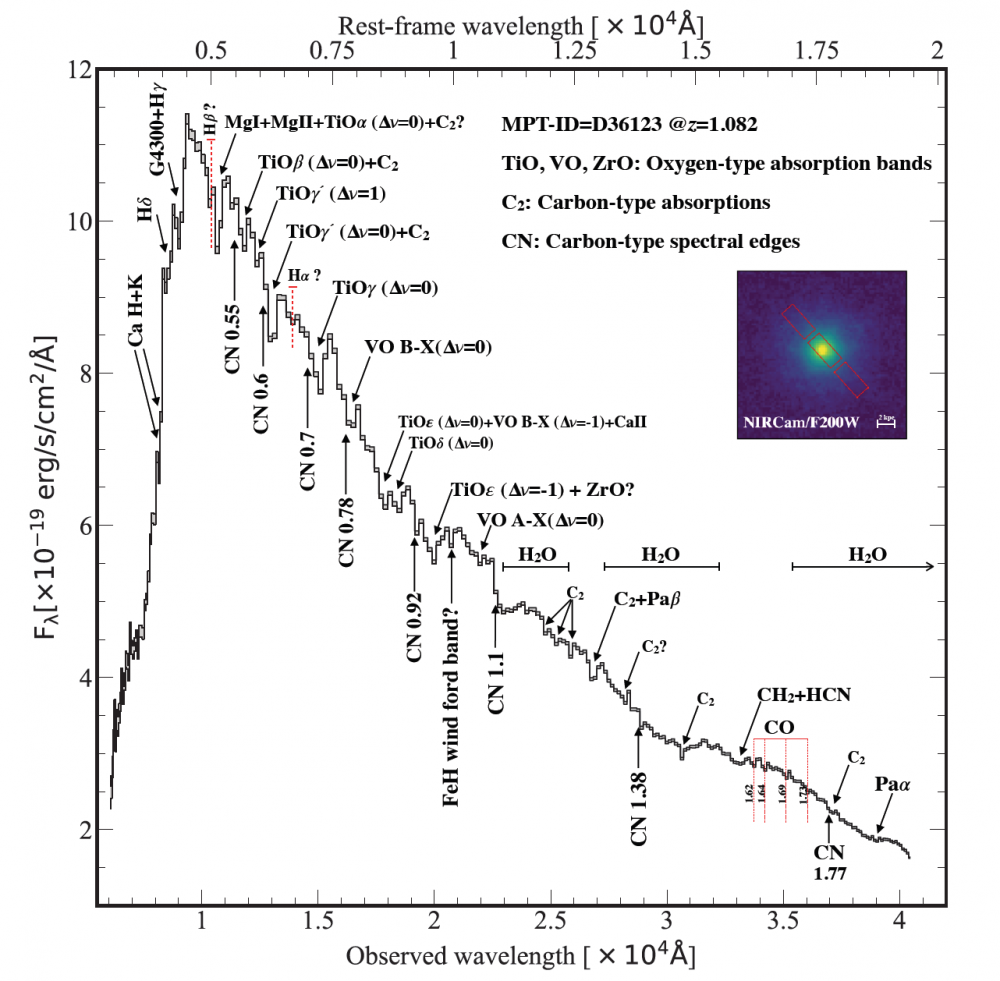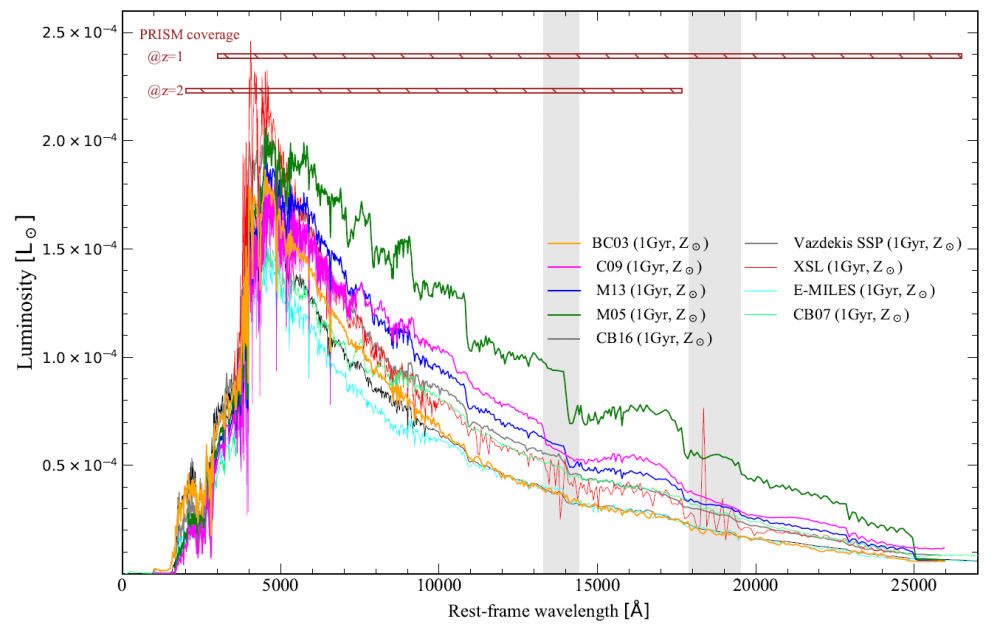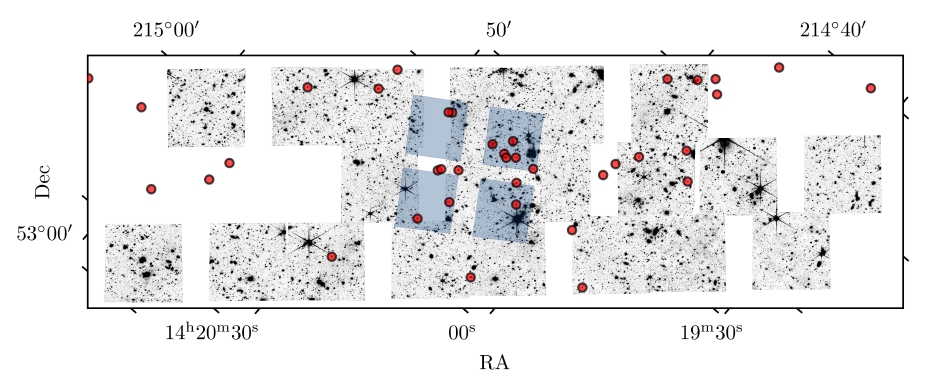Understanding the diverse stellar populations that make up galaxies is crucial to studying their formation over cosmic time. Nevertheless, some intractable stars continue to resist the modellers! Their complex nature and short lifetimes make stars in the asymptotic branch of thermally pulsating giants (TP-AGB) difficult to model, a subject of debate for decades. The James Webb Space Telescope is finally lifting the veil on their contribution to the spectrum of distant galaxies. These discoveries have implications for determining the age and stellar mass of galaxies, as well as for cosmic dust production and chemical enrichment.
This discovery has just been published in the prestigious journal Nature
TP-AGB stars - the missing link in the study of galaxies
To understand the formation and evolution of galaxies, researchers use the stellar populations that make them up by comparing the spectra of observed galaxies with stellar models based on observations and theories.
Although most of the evolutionary phases of stars are well modelled, TP-AGB stars, asymptotic giants with thermal pulsations, remain a source of uncertainty. With their short lifetimes (between 0.6 and 2 billion years) and rapid evolution due to complex phenomena such as mass loss and thermal pulsations, these stars are particularly difficult to model.
The contribution of cold TP-AGB stars to the infrared emission of galaxies has long been the subject of controversy. If their contribution is significant, it could reduce estimates of the age and mass of galaxies, particularly those around 1 billion years old, which are frequently observed in the distant universe. Such a revision would have major repercussions for our understanding of the formation and evolution of galaxies (see Figure 1).

Figure 2 - The spectrum reveals numerous broad absorptions and spectral discontinuities, characteristic signatures of TP-AGB stars. This is the first detection of these stars in the spectrum of a distant galaxy.
First clear signatures of TP-AGB stars revealed by the James Webb Space Telescope
TP-AGB stars are cool stars with distinctive spectral signatures in the near infrared (0.5-2 microns), including broad absorption bands and discontinuities caused by various molecules. If these stars make a significant contribution to the light of a galaxy, these spectral features should be easy to detect.
A team of researchers led by the Astrophysics Department at CEA-Saclay used observations from the James Webb Space Telescope (JWST), whose infrared sensitivity is ideal for detecting these stars in quiescent galaxies that are young (∼ 1 billion years) and distant (z = 1-2). The researchers selected three galaxies from the CEERS (JWST NIRSpec Cosmic Evolution Early Release Science) programme, one of which, being much more luminous than the others, offered a high-quality spectrum.
The spectrum of this galaxy, named D36123, revealed clear signatures of oxygen- and carbon-rich TP-AGB stars, with a significant contribution to the galaxy's light (see Figure 2). The other two galaxies, although presenting a spectrum of inferior quality, confirm these observations.
Stellar synthesis models incorporating a significant contribution from TP-AGB stars fit the observed spectra better, indicating that these galaxies may be less massive and younger than initially thought. These results also have implications for the production of cosmic dust and the chemical enrichment of galaxies.
Future observations to constrain models
Galaxy D36123 is unique and has no known analogue in the nearby Universe, offering the first glimpse of cold star emission in distant galaxies. This discovery puts an end to the debate about their presence in galaxies several billion years old. However, even the model that best fits the data cannot explain all the richness of the spectral signatures detected. A larger sample of similar observations is therefore crucial to determine whether the characteristics of galaxy D36123 are exceptional or whether they reflect properties common to quiescent galaxies.
The research team has also obtained new observations with JWST to investigate these questions further. In the longer term, the team plans to observe these galaxies at longer wavelengths in order to obtain better stellar models, guided by current and future observations.
Contact Irfu/DAp: Emanuele Daddi
Further information:
- Nature paper
- Presse release from the Nanjing University
- Presse release from the Portsmouth University
• Structure and evolution of the Universe › Evolution of the large structures and galaxies Thèmes de recherche du Service d'astrophysique › Interpretation
• Department of Astrophysics (DAp) // UMR AIM
• Cosmology and Galaxy Evolution
• JWST





